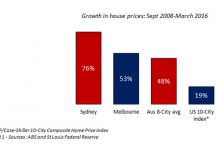Most asset classes posted losses for the month of August, with the exception of some commodities. Around month end nervousness in markets was mostly blamed on the likeliness of an attack on Syria.
Overall, it seems that markets are still very much driven by statements regarding the US Quantitative easing program even though Bernanke has repeatedly emphasized that the stance of monetary policy will remain accommodative after Tapering gets underway. All the Fed’s efforts at forward guidance and unemployment rate targets are geared towards emphasizing this, but the bond market seems to see the Taper not just as a reduction in monthly bond purchases, but as the start of a long run monetary policy normalization process.
Economic news released through the period was mostly positive; In the US, Real GDP for the second quarter came in at 2.5%, ahead of Q1’s figure of 1.1% and the consensus estimate of 2.1%. Significant improvement was witnessed in several pockets of the economy; real personal consumption expenditure was up 1.8%, real non-residential fixed investment gained 4.4% and real exports of goods and services witnessed an increase of 8.6%. In Europe, the unemployment rate in Germany remained at a low level while inflation for the month of August declined.
On balance, economies around the world look in good shape to support asset markets, but there are sufficient concerns out there to cause volatility and it is not clear cut how much of the good news is already priced in (especially in the US equity market). It is a good time to continue to proceed with caution, and time any buying very carefully.
We can thank the Federal Reserve (“Fed”) chairman, Ben Bernanke, and his comments on tapering of quantitative easing for the ongoing volatility in capital markets. In May 2013 he hinted that the US$85 billion per month bond purchase will be reduced as economic recovery in the US may be satisfactory to implement reduced stimulus. This comment may send US bond yields soaring from 1.65% to almost 3% in the next 4 months. South African & Emerging Market bond yields followed the same pattern as did most high yield asset classes, such as listed property and high dividend yield stocks. These asset classes are the cornerstone of low risk portfolios, which experienced unprecedented price volatility and, in some cases, temporary capital loss as a consequence.
On 18 September the Fed reversed its views and commented that there has been “growing underlying strength in the economy,” but wants to “wait until more progress has been made before adjusting the pace of its bond purchases.” While the Fed’s decision is unsurprisingly bond, equity and emerging market currency positive, as indicated above, it is wise to expect ongoing volatility as the communications from the Fed remains confusing.
This has been written deliberately after Bernanke’s announcement so as to accommodate the impact of the decision of the Federal Reserve on its controversial program of quantitative easing. The news that there was to be no immediate tapering was a surprise, with the resulting moves upward in equities and bonds, and downward in the US Dollar generally benefiting most fund managers in the short term. Last month, there was concern about the reliance of the current bull market on such accommodative policy. The recent decision only strengthened these views.
We remain locked in a perverse environment where weak economic data is perceived as being equity-positive, given the assumption of prolonged accommodation. Although many generally applaud the actions of the central bank in the US, the current path they are pursuing is in real danger of emulating Charles Ponzi. At some stage, policymakers must step back and allow the recovery to take shape on its own, there is only so much paraffin that can be poured on the flames.
Participants coming to the financial markets seeking logic and certainty will be quickly disappointed. Instead, comfort with and acceptance of the unknown are two of the criteria that we look for in prospective fund managers. A sound investment approach, based on experience, resilience and a plausible intellectual argument will ultimately deliver on its goals. More importantly, such approaches will navigate the currents of global markets, regardless of broad direction.
Although concerned about the ability of global equities to sustain the current pace, we are far less concerned about our ability to protect our investors from significant downside, should such an outcome materialise. In conclusion, trying to time markets on a very short term basis is a mug’s game, especially when based on central bank guidance.
| The above data and research was compiled from sources believed to be reliable. However, neither MBMG International Ltd nor its officers can accept any liability for any errors or omissions in the above article nor bear any responsibility for any losses achieved as a result of any actions taken or not taken as a consequence of reading the above article. For more information please contact Graham Macdonald on [email protected] |




